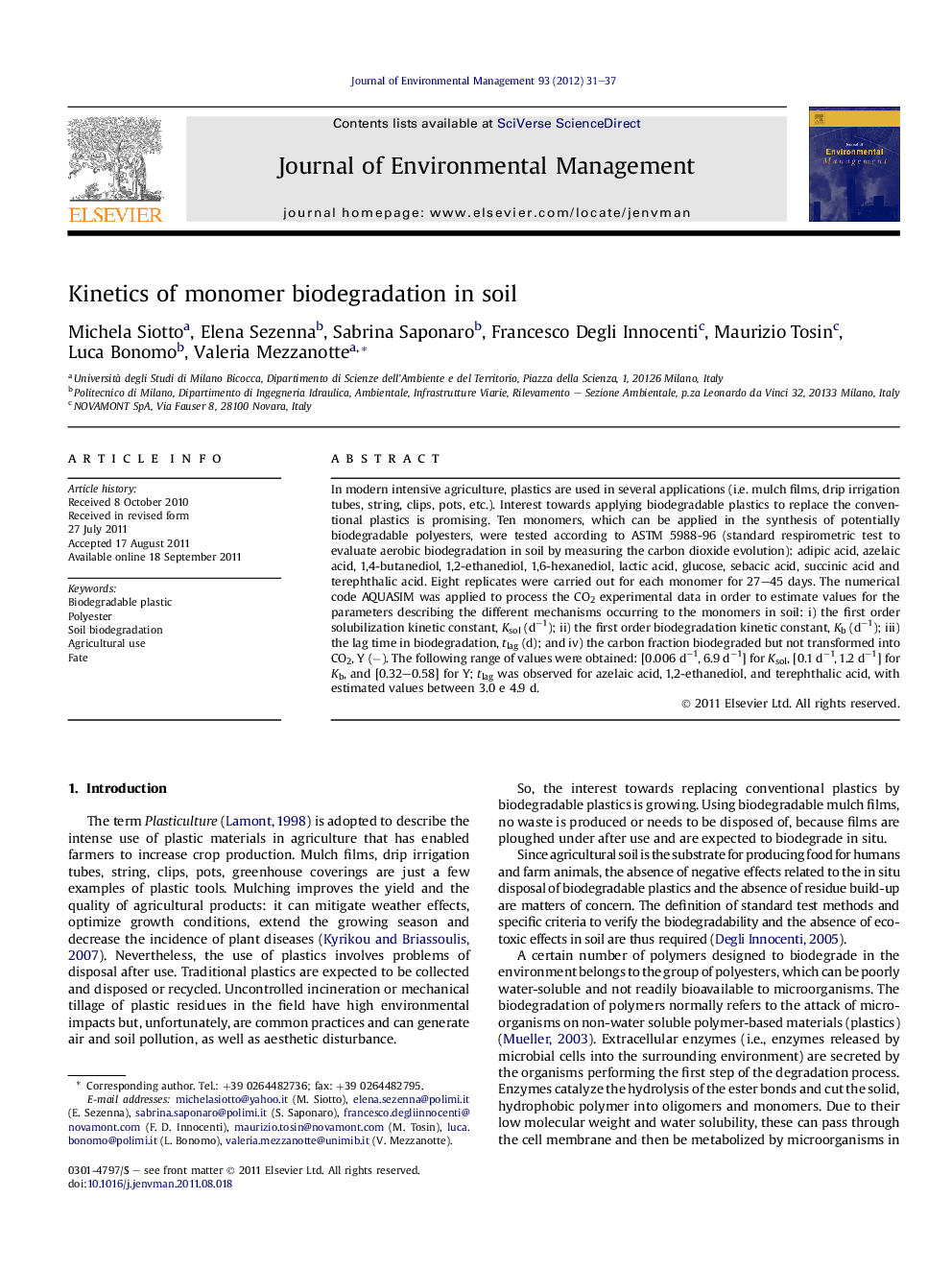| Article ID | Journal | Published Year | Pages | File Type |
|---|---|---|---|---|
| 1056963 | Journal of Environmental Management | 2012 | 7 Pages |
In modern intensive agriculture, plastics are used in several applications (i.e. mulch films, drip irrigation tubes, string, clips, pots, etc.). Interest towards applying biodegradable plastics to replace the conventional plastics is promising. Ten monomers, which can be applied in the synthesis of potentially biodegradable polyesters, were tested according to ASTM 5988-96 (standard respirometric test to evaluate aerobic biodegradation in soil by measuring the carbon dioxide evolution): adipic acid, azelaic acid, 1,4-butanediol, 1,2-ethanediol, 1,6-hexanediol, lactic acid, glucose, sebacic acid, succinic acid and terephthalic acid. Eight replicates were carried out for each monomer for 27–45 days. The numerical code AQUASIM was applied to process the CO2 experimental data in order to estimate values for the parameters describing the different mechanisms occurring to the monomers in soil: i) the first order solubilization kinetic constant, Ksol (d−1); ii) the first order biodegradation kinetic constant, Kb (d−1); iii) the lag time in biodegradation, tlag (d); and iv) the carbon fraction biodegraded but not transformed into CO2, Y (−). The following range of values were obtained: [0.006 d−1, 6.9 d−1] for Ksol, [0.1 d−1, 1.2 d−1] for Kb, and [0.32–0.58] for Y; tlag was observed for azelaic acid, 1,2-ethanediol, and terephthalic acid, with estimated values between 3.0 e 4.9 d.
► The paper deals with the biodegradation of polymers in soil. ► We examine biodegradation of monomers used in the biodegradable plastic synthesis. ► AQUASIM code is used for calculating the kinetics constants of biodegradation steps. ► Important fractions of carbon from polymer biodegradation are incorporated in biomass.
